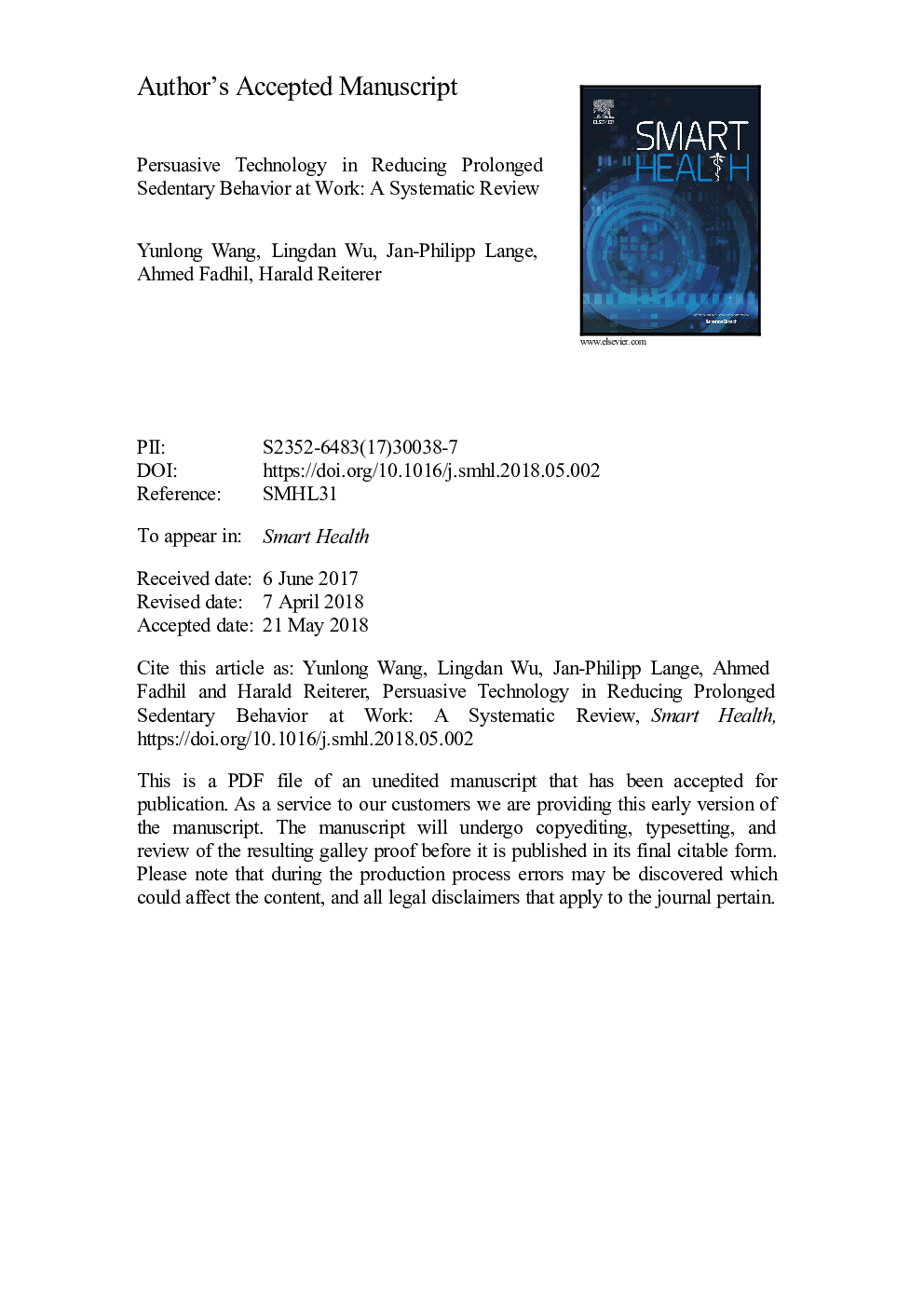| Article ID | Journal | Published Year | Pages | File Type |
|---|---|---|---|---|
| 10224473 | Smart Health | 2018 | 23 Pages |
Abstract
Prolonged sedentary behavior is prevalent among office workers and has been found to be detrimental to health. Preventing and reducing prolonged sedentary behavior require interventions, and persuasive technology is expected to make a contribution in this domain. In this paper, we use the framework of persuasive system design (PSD) principles to investigate the utilization and effectiveness of persuasive technology in intervention studies at reducing sedentary behavior at work. This systematic review reveals that reminders are the most frequently used PSD principle. The analysis on reminders shows that hourly PC reminders alone have no significant effect on reducing sedentary behavior at work, while coupling with education or other informative session seems to be promising. Details of deployed persuasive technology with behavioral theories and user experience evaluation are lacking and expected to be reported explicitly in the future intervention studies.
Related Topics
Physical Sciences and Engineering
Computer Science
Computer Networks and Communications
Authors
Yunlong Wang, Lingdan Wu, Jan-Philipp Lange, Ahmed Fadhil, Harald Reiterer,
